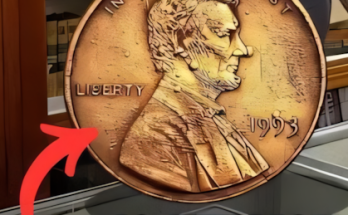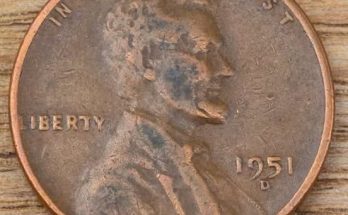Wheat pennies—those charming U.S. one-cent coins with wheat ears on the reverse—have always carried a little magic. Whether you found one in a dusty old jar at your grandparents’ place or snagged a shiny one from a local flea market, these coins have a story. And, honestly, that story has only become more interesting over the past 13 years.
Coin collectors around the U.S. have watched wheat penny values quietly grow. Some made little jumps, some made surprising leaps, and a few took off like shooting stars. But before we dive into numbers and trends, let’s set the stage.
Wheat pennies were minted from 1909 to 1958. They replaced the Indian Head cent and introduced a youthful Lincoln on the front—commemorating his 100th birthday. The reverse design carried two wheat stalks, symbolizing prosperity. Today, these coins are no longer in circulation… but they are definitely circulating in the world of collectors.
Let’s take a fun, slightly deep dive into what’s been happening with wheat penny values over the past 13 years—and why collectors can’t get enough. ✨
🕰️ How Their Value Has Shifted: A 13-Year Story
Now, to be fair, wheat pennies have never been the kind of investment where you buy one today and yacht-shop tomorrow. However, steady collectors—those who held on patiently—often saw nice gains.
To give you a clearer picture, let’s go back roughly 13 years.
Around 2012, common circulated wheat pennies usually sold for 5–10¢, maybe a bit more depending on condition. You could even buy a giant bag for pocket change (well… almost). The 1909–1930 era coins were already getting pricier back then, but nothing like the surge that followed.
Fast-forward through the years:
- 2015: Collecting interest increased; social media coin channels helped.
- 2018: Rare mint-error pennies began catching attention.
- 2020–2021: During pandemic years, hobby participation exploded. People at home rediscovered old collections. Wheat pennies suddenly caught fire. 🔥
- 2023–2025: Prices have continued rising, especially for uncirculated pieces and rare variations.
Sure, not every wheat penny is a small fortune—many still hover close to a couple of cents. But key dates and mint marks? Different story.
Let’s talk specifics.
💰 Key Wheat Penny Values Today (Typical Market Range)
Note: These are general collector estimates in the U.S. market for circulated conditions. Higher grades can multiply prices dramatically.
| Wheat Penny | Mint Mark | Estimated Value Today (USD) |
|---|---|---|
| 1909-S VDB | S | $1,200–$2,500+ |
| 1914-D | D | $180–$400+ |
| 1922 No D | None | $500–$1,200+ |
| 1926-S | S | $30–$120+ |
| 1931-S | S | $60–$150+ |
| 1943 Bronze | Many | $100,000+ |
| 1944 Steel | Many | $60,000+ |
| Common 1940s–1958 | — | $0.05–$0.25 |
| Uncirculated 1950s | — | $2–$10 |
| Random Error Wheat Cents | — | $50–$10,000+ |
(Yes, your eyes aren’t lying—some error pennies can go into six figures. 😳)
If you’ve got a 1909-S VDB or a 1914-D, you’re basically holding a little treasure.
📈 Why Wheat Penny Values Have Increased
You might be wondering—why the jump? Why now?
A few reasons:
✅ 1. Growing Hobby Popularity
When people dive into collecting, demand increases. And honestly, more folks took up coin-collecting in the last decade than many expected.
✅ 2. Increased Awareness of Rare Varieties
Social media helped collectors learn which pennies were valuable. Suddenly, grandma’s coin jar became the focus of a treasure hunt.
✅ 3. Limited Supply
Every year, more wheat pennies disappear into long-term collections. The fewer in circulation, the higher the value.
✅ 4. Inflation & Collectible Market Growth
Just like baseball cards or Pokémon cards, interest in vintage items has risen.
✅ 5. Nostalgia (Yep, it’s real)
These coins connect people to a simpler American time. That emotional value matters.
🪙 The Word on the Street (Collectors Talk)
Collectors often say wheat pennies are one of the best entry-points into numismatics. They’re inexpensive (unless you’re chasing the big ones), easy to identify, and fun to hunt. Plus, they look great displayed—those wheat ears pop nicely.
Many collectors have even upgraded. They started with jars, moved to year-sets, and finally started buying professional graded examples. Little steps—but rewarding ones.
🔎 What Makes Wheat Pennies Valuable?
Not all wheat pennies are winners. Some are more… common passengers. But a few strike gold thanks to:
⭐ 1. Year & Mint Mark
Some mints had low production. Fewer coins = higher value.
⭐ 2. Condition
Higher grades (minimal wear) sell for a premium. Uncirculated examples? Big money.
⭐ 3. Errors
Wrong planchet, doubled die, off-center strikes… collectors love mistakes.
⭐ 4. Rarity
Some varieties are extremely rare (hello, 1943 bronze penny).
👀 Popular Penny Trends in Past 13 Years
Let’s be real: nobody predicted the massive rise of some error wheat pennies. On the flip side, common wheat pennies haven’t changed much—still around 5–25¢ each.
But rare ones? They’ve exploded.
For example:
- The 1914-D often sold for less than $150 before 2012.
- Today? Often $200–$400+ in circulated condition.
Same with the 1922 No D. Its fan base increased, and so did prices.
And if you found a 1943 bronze penny… your future grandkids might thank you.
🏆 Collecting Tips
Here’s some practical advice if you want to get into wheat pennies:
✅ Focus on key dates
✅ Good lighting helps identify mint marks
✅ Learn grading basics
✅ Store coins properly (no moisture)
✅ Be patient — collecting takes time
Honestly, there’s no rush. Half the fun is the hunt.
✅ FAQs (Short)
❓1) Are wheat pennies rare?
Some are, many are not. It depends on year, mint mark & condition.
❓2) What is the most valuable wheat penny?
The 1943 bronze penny, often worth $100,000+.
❓3) Should I clean wheat pennies?
No—cleaning usually lowers value.
❓4) Are wheat pennies still a good investment?
For long-term collectors? Yes. Especially key dates.
❓5) Can common wheat pennies be valuable?
Mostly no, but rare errors can change everything.
💭 Final Thoughts
Wheat pennies represent more than just tiny pieces of copper. They tell stories—of American history, early Lincoln admiration, and wartime metal shortages. In the past 13 years, their value has quietly climbed. Some jumped dramatically, while others remain humble starter pieces.
Honestly? That’s the charm.
Even if your collection doesn’t rake in thousands, holding a wheat penny is like holding a piece of American nostalgia. And if you happen to find a key 1909-S VDB or a mysterious 1943 bronze… well, that’s the dream. 🌟
Until then—happy hunting, enjoy the thrill, and may your next penny surprise you!



